
ZEROTAPE® VS. Standard Dispenser
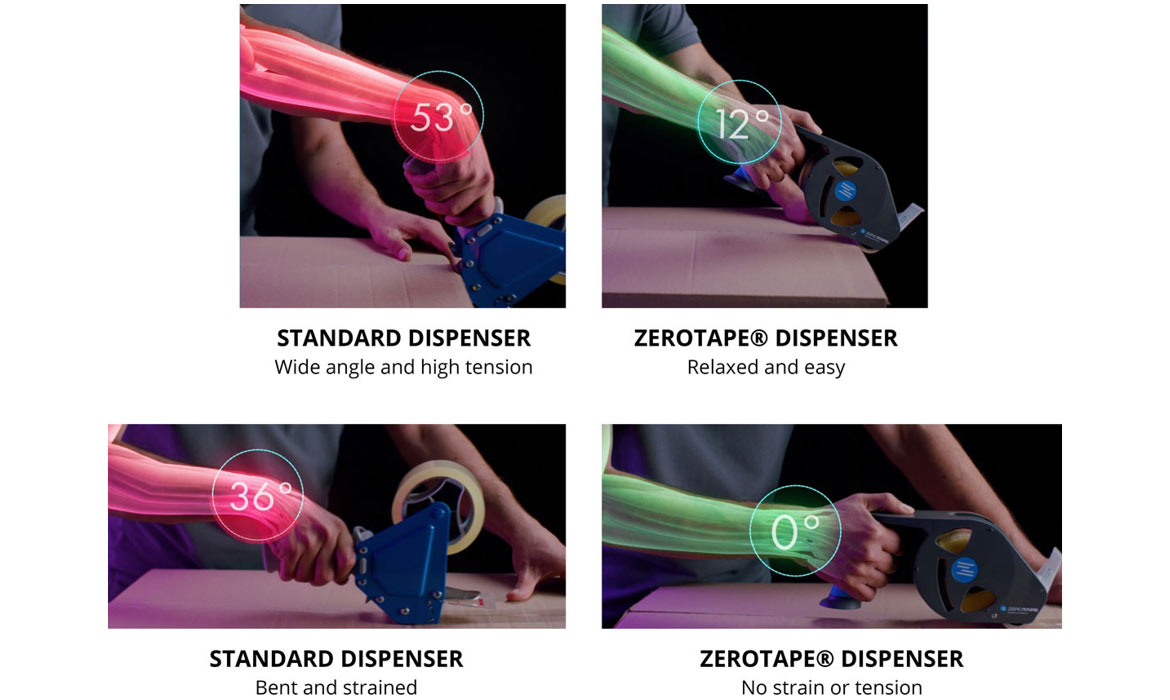
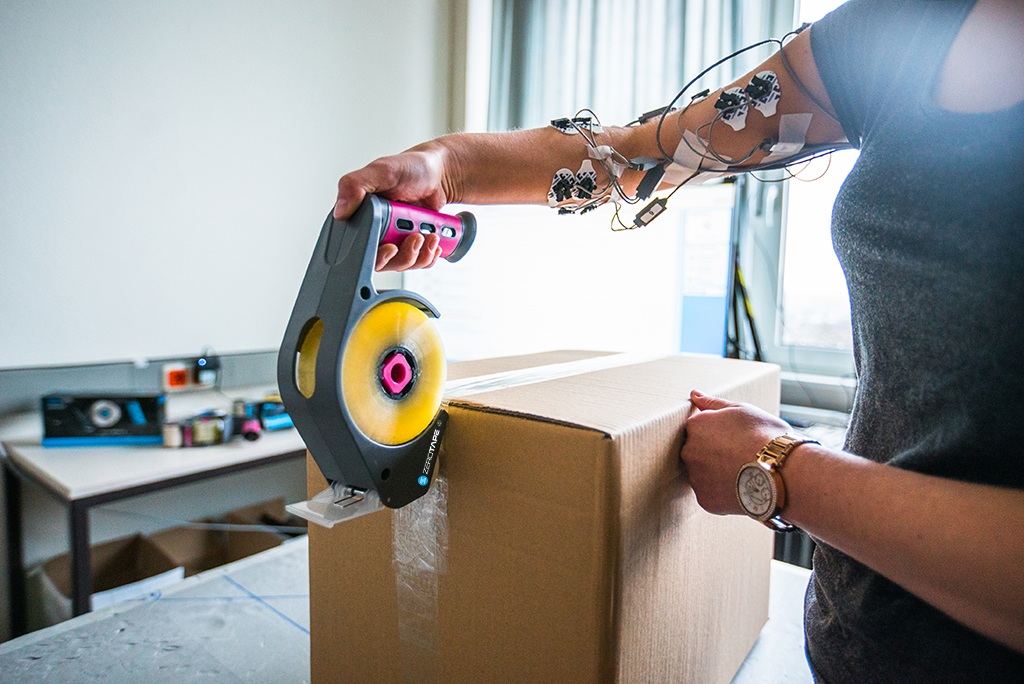
Scientifically proven
With the new ZeroTape® packing tape system, seven important muscle groups in the hands, arms and shoulders are used significantly less than with traditional tape dispensers.
Working with ZeroTape® reduces muscle activity by up to 25 % (absolute). These evaluations were compiled by the department of Ergonomics at the University of Siegen.
ZeroTape vs. Standard Tape Roller
Comparison of the Ergonomic Quality of Different Packaging Tape Systems
Engineering Department | Work Science/Ergonomics | University of Siegen, Germany
The Department of Work Science and Ergonomics at the University of Siegen was commissioned as an external and neutral research facility to examine the ZeroTape packaging tape system in terms of its ergonomic quality and possible associated assistance with work in comparison with conventional/classic models.
During the course of this study, working trials lasting several hours were carried out with 15 test subjects to analyse the ergonomic quality of the tape dispenser. The main focus was placed on the handling aspect of the work equipment as well as on the muscular strain of the hand-arm-shoulder system or the following muscles affected by tape dispensers:

During the investigation three packaging tape dispensers were used:
? ZeroTape‐packaging tape dispenser with safety knife
? Standard‐packaging tape dispenser
? Standard‐packaging tape dispenser with faulty knife
To be able to quantify the different muscle strains during the use of various dispensers, continuous electromyographic derivations were provided through many methods. As shown in Figure 1, during the work trials the electrical voltages of the test subjects’ muscles were recorded (see Fig. 2) via bipolar leads (i.e. via two electrodes attached).

Figure 1:
The measuring system for recording the electromyographic activity with a transmitter and receiver unit, surface electrodes and signal cables with preamplifier unit (left) and screenshot of software display (right).

Figure 2:
The recording of muscle activity with surface electrodes on
the right-hand shoulder-arm-shoulder system.
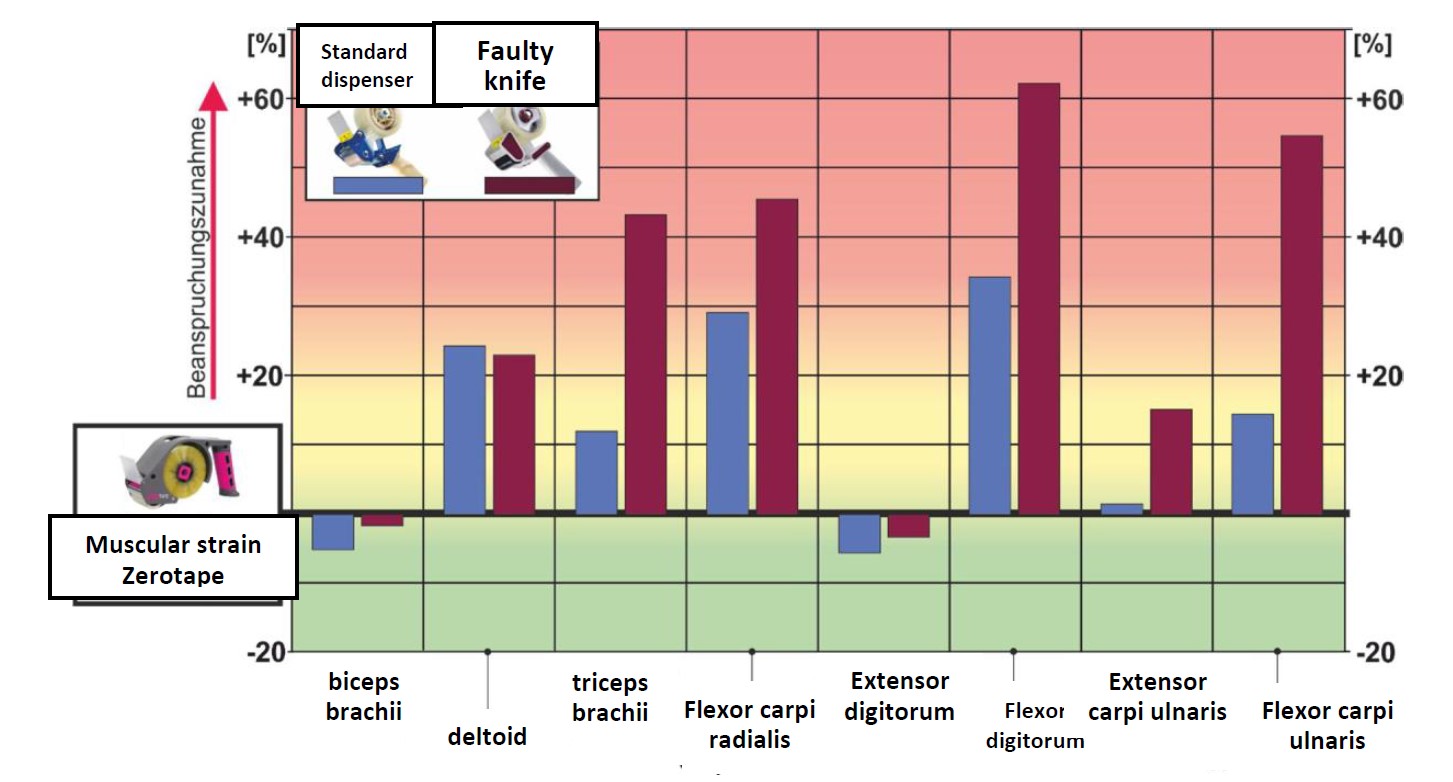
The results of the study are shown in Figure 3. The muscular strain during the use of ZeroTape was set as a reference and the additional or reduced activity of the other dispensers were calculated accordingly.
Figure 3:
Added or reduced muscular strain in % when using a standard dispenser with and without a fault knife in comparison to the reference ZeroTape dispenser (mean value calculated over 15 test subjects).
From the investigation results it can be seen that the ZeroTape dispenser presents a valuable ergonomic development. For example, the use of a standard dispenser leads to significantly higher strain in 5 out of the 8 muscles considered.
This is particularly visible with the heavy wrist-straining attachment and detachment processes (see Fig. 4). In comparison to the standard dispenser, the muscular strain of the flexor carpi radialis muscle (about -15%) and flexor carpi ulnaris muscle (about -30%) is thus minimised.

Figure 4:
Deflections of the wrist during the attachment and after detachment with use of the standard dispenser and ZeroTape
The greatest savings in muscle strength – again compared to the standard dispenser – can be attained in the flexor digitorum (-35%) compared to the standard dispenser, which is due to holding the ZeroTape
dispenser in a positive-locking connection between the handle and the hand (see Fig. 5). Here the new design shows its greatest advantages over the classic design.
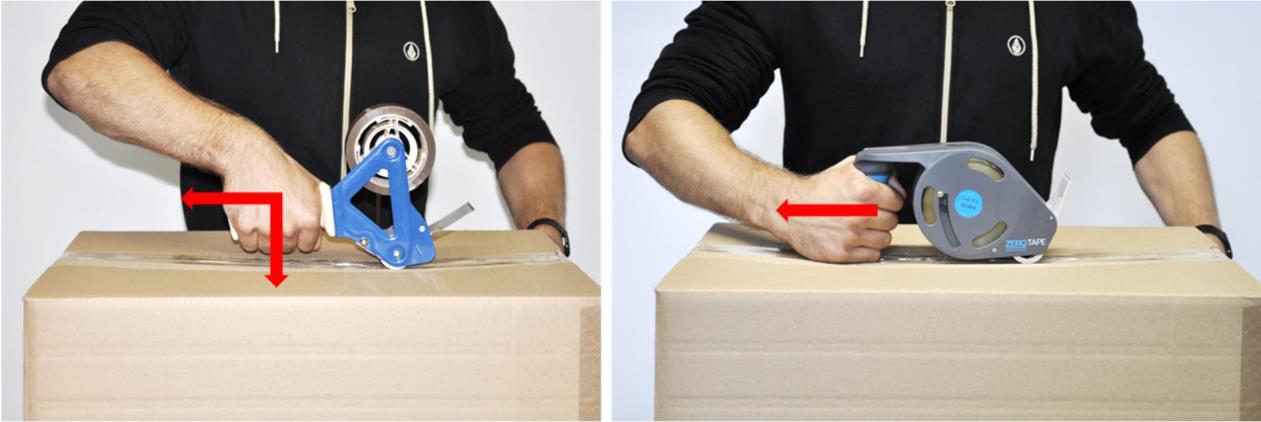
Figure 5:
Representation of different coupling methods when using the standard dispenser. Red arrows indicate the corresponding directions of force.
The reduced deflections of the wrist, coupled with the significantly lower gripping force, bring further advantages. Therefore, the possible limitations of the wrist (tendon insufficiency) as well as the occurrence of discomfort (epicondylitis – a.k.a. tennis arm and compression syndrome) are reduced.
The ZeroTape dispensing resistance, also relieves the shoulder muscles, especially the deltoideus pars spinalis (-25%).
The effects of the faulty knife are also visible (see Fig. 3). Through the difficult detachment process, the muscular strain of the wrist muscles (partly > 60%) and the triceps branchii increases enormously.
Therefore, in practice, dispensers with retractable safety knives (such as ZeroTape) are preferable without restriction.
Summary
On the whole, the bottle-neck muscle structure in the shoulder and lower arm is relieved by an average of almost 25% with the use of ZeroTape. Since in many logistics areas packaging tape systems are also often used continuously, this does not only present a great assistance.
In addition, more natural handling can reduce the occurrence of possible muscle and joint discomfort, especially during critical attachment and detachment procedures.
Based on these findings, the ZeroTape packaging tape system can be fully recommended from an ergonomic point of view.
Awards
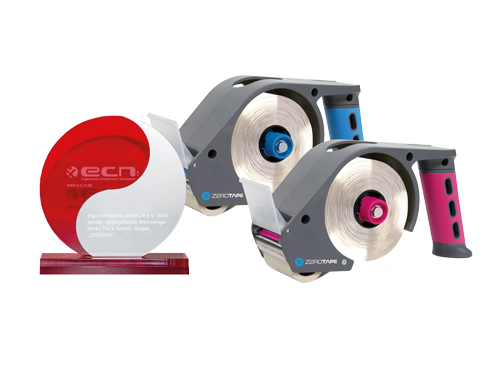
ECN Ergonomics Prize
The ZeroTape® First dispensers were awarded with the Ergonomics Prize for outstanding product development in the field of hand held tools. The unique ergonomics of our tape system were further underpinned in a keynote adress by Dr.-Ing. Mario Penzkofer during the Days of Ergonomics on Lake Constance.
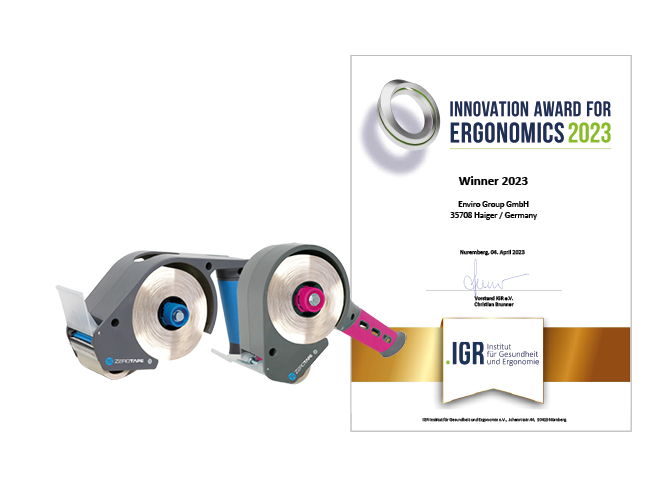
Innovation Award for Ergonomics 2023
For the development of the ergonomic tape system ZeroTape®, the Enviro Group GmbH won the Innovation Award for Ergonomics 2023. The prize is awarded by the Institute for Health and Ergonomics (IGR) to honour special achievements in the field of ergonomics. With this award, the institute aims to support all efforts for more ergonomics in everyday life.

Distributors
ZeroTape® distributers are based across Europe, the US, Australia and New Zealand with more joining all the time.
Become a distributor now!
contact